#Reverb Integration
Explore tagged Tumblr posts
Text
Tired of updating your inventory manually? Now no more, Automate the process for real-time tracking and effortlessly. Focus on growth, not stock counts!
#lightspeed integration#amazon integration#bigcommerce integration#square pos integration#zoho inventory integration#magento integration#lightspeed pos integration#shopify integration#woocommerce integration#loyverse pos integration#Lazada Integration#DubaiStore Integration#Noon Integration#Reverb Integration#Faire Integration#Wayfair Integration
0 notes
Text
Maximizing Your Reach- Lightspeed’s Seamless Integration with Reverb by SKUPlugs
In the ever-evolving world of e-commerce, expanding your reach is crucial for staying competitive. For businesses operating in the music and instrument industry, reaching a broader audience often involves connecting with specialized marketplaces like Reverb. To make this process seamless and efficient, SKUPlugs brings you Lightspeed’s integration with Reverb, offering a powerful solution to maximize your reach and streamline your operations.
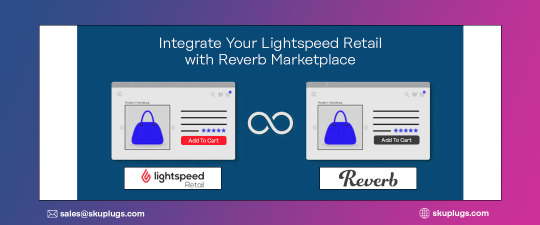
Bridging the Gap: Lightspeed and Reverb Integration
Lightspeed Retail POS system is a comprehensive point-of-sale solution designed to meet the diverse needs of retail businesses. With its user-friendly interface and robust features, Lightspeed Retail streamlines sales, inventory management, and customer relationships. From real-time analytics to seamless integration capabilities, Lightspeed empowers retailers to enhance efficiency and deliver exceptional customer experiences.
Reverb Marketplace is a leading online platform specializing in musical instruments, gear, and accessories. Renowned for its vast selection and community-driven approach, Reverb connects buyers and sellers globally, creating a vibrant marketplace for musicians and enthusiasts. With transparent transactions, expert reviews, and a dedicated focus on the music industry, Reverb offers a dynamic space for buying and selling musical equipment.
Lightspeed, known for its versatile point-of-sale and inventory management solutions, has teamed up with Reverb, the leading online marketplace for musical instruments, gear, and accessories. The integration facilitated by SKUPlugs creates a seamless bridge between Lightspeed and Reverb, enabling businesses to synchronize their inventory, sales, and customer data effortlessly.
Key Benefits of Lightspeed’s Integration with Reverb
Wider Audience Reach: By integrating Lightspeed with Reverb, businesses can instantly tap into Reverb’s extensive user base, exposing their products to a broader audience of music enthusiasts, collectors, and professionals.
Near to Real-Time Inventory Sync: Say goodbye to the hassle of manually updating inventory levels. Lightspeed’s integration with Reverb, powered by SKUPlugs, ensures that your product availability is updated in real-time across both platforms, reducing the risk of overselling and enhancing customer satisfaction.
Efficient Order Fulfillment: Streamlining order management is a game-changer. Lightspeed Reverb integration allows businesses to fulfill orders seamlessly, whether they originate from the Lightspeed POS system or the Reverb marketplace. This efficiency not only saves time but also minimizes the potential for errors in the fulfillment process.
Unified Customer Experience: Providing a consistent experience for customers is paramount. With SKUPlugs facilitating the integration, Lightspeed ensures that customer data, including order history and preferences, remains synchronized between Lightspeed and Reverb. This harmonious approach contributes to enhanced customer satisfaction and loyalty.
How SKUPlugs Enhances the Lightspeed and Reverb Integration
SKUPlugs acts as the catalyst for a seamless integration experience. Its advanced technology and expertise in e-commerce integrations empower businesses to effortlessly connect Lightspeed with Reverb, creating a unified ecosystem that maximizes efficiency and minimizes manual effort.
Conclusion In the competitive landscape of e-commerce, maximizing your reach is not just an advantage; it’s a necessity. Lightspeed’s seamless Reverb integration, facilitated by SKUPlugs, offers businesses in the music industry a powerful tool to expand their audience, streamline operations, and elevate the overall customer experience. By embracing this integration, businesses can harmonize their efforts and unlock new opportunities for growth in the dynamic world of online retail.
Original Source: Lightspeed and Reverb integration
#Lightspeed and Reverb integration#Lightspeed integration with Reverb#Reverb integration#Lightspeed integration
0 notes
Text
Maximizing Your Reach- Lightspeed’s Seamless Integration with Reverb by SKUPlugs
In the ever-evolving world of e-commerce, expanding your reach is crucial for staying competitive. For businesses operating in the music and instrument industry, reaching a broader audience often involves connecting with specialized marketplaces like Reverb. To make this process seamless and efficient, SKUPlugs brings you Lightspeed’s integration with Reverb, offering a powerful solution to maximize your reach and streamline your operations.

Bridging the Gap: Lightspeed and Reverb Integration
Lightspeed Retail POS system is a comprehensive point-of-sale solution designed to meet the diverse needs of retail businesses. With its user-friendly interface and robust features, Lightspeed Retail streamlines sales, inventory management, and customer relationships. From real-time analytics to seamless integration capabilities, Lightspeed empowers retailers to enhance efficiency and deliver exceptional customer experiences.
Reverb Marketplace is a leading online platform specializing in musical instruments, gear, and accessories. Renowned for its vast selection and community-driven approach, Reverb connects buyers and sellers globally, creating a vibrant marketplace for musicians and enthusiasts. With transparent transactions, expert reviews, and a dedicated focus on the music industry, Reverb offers a dynamic space for buying and selling musical equipment.
Lightspeed, known for its versatile point-of-sale and inventory management solutions, has teamed up with Reverb, the leading online marketplace for musical instruments, gear, and accessories. The integration facilitated by SKUPlugs creates a seamless bridge between Lightspeed and Reverb, enabling businesses to synchronize their inventory, sales, and customer data effortlessly.
Key Benefits of Lightspeed’s Integration with Reverb
Wider Audience Reach: By integrating Lightspeed with Reverb, businesses can instantly tap into Reverb’s extensive user base, exposing their products to a broader audience of music enthusiasts, collectors, and professionals.
Near to Real-Time Inventory Sync: Say goodbye to the hassle of manually updating inventory levels. Lightspeed’s integration with Reverb, powered by SKUPlugs, ensures that your product availability is updated in real-time across both platforms, reducing the risk of overselling and enhancing customer satisfaction.
Efficient Order Fulfillment: Streamlining order management is a game-changer. Lightspeed Reverb integration allows businesses to fulfill orders seamlessly, whether they originate from the Lightspeed POS system or the Reverb marketplace. This efficiency not only saves time but also minimizes the potential for errors in the fulfillment process.
Unified Customer Experience: Providing a consistent experience for customers is paramount. With SKUPlugs facilitating the integration, Lightspeed ensures that customer data, including order history and preferences, remains synchronized between Lightspeed and Reverb. This harmonious approach contributes to enhanced customer satisfaction and loyalty.
How SKUPlugs Enhances the Lightspeed and Reverb Integration
SKUPlugs acts as the catalyst for a seamless integration experience. Its advanced technology and expertise in e-commerce integrations empower businesses to effortlessly connect Lightspeed with Reverb, creating a unified ecosystem that maximizes efficiency and minimizes manual effort.
Conclusion In the competitive landscape of e-commerce, maximizing your reach is not just an advantage; it’s a necessity. Lightspeed’s seamless Reverb integration, facilitated by SKUPlugs, offers businesses in the music industry a powerful tool to expand their audience, streamline operations, and elevate the overall customer experience. By embracing this integration, businesses can harmonize their efforts and unlock new opportunities for growth in the dynamic world of online retail.
Original Source: Lightspeed and Reverb integration
#Lightspeed Reverb integration#Lightspeed integration#Reverb integration#Lightspeed integration with Reverb
0 notes
Text
Maximizing Your Reach- Lightspeed’s Seamless Integration with Reverb by SKUPlugs
In the ever-evolving world of e-commerce, expanding your reach is crucial for staying competitive. For businesses operating in the music and instrument industry, reaching a broader audience often involves connecting with specialized marketplaces like Reverb. To make this process seamless and efficient, SKUPlugs brings you Lightspeed’s integration with Reverb, offering a powerful solution to maximize your reach and streamline your operations.
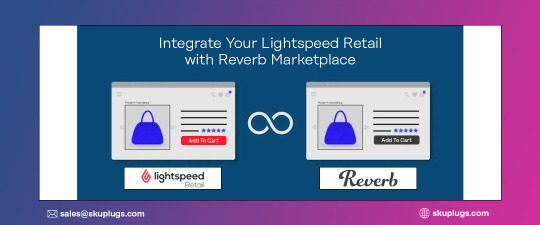
Bridging the Gap: Lightspeed and Reverb Integration
Lightspeed Retail POS system is a comprehensive point-of-sale solution designed to meet the diverse needs of retail businesses. With its user-friendly interface and robust features, Lightspeed Retail streamlines sales, inventory management, and customer relationships. From real-time analytics to seamless integration capabilities, Lightspeed empowers retailers to enhance efficiency and deliver exceptional customer experiences.
Reverb Marketplace is a leading online platform specializing in musical instruments, gear, and accessories. Renowned for its vast selection and community-driven approach, Reverb connects buyers and sellers globally, creating a vibrant marketplace for musicians and enthusiasts. With transparent transactions, expert reviews, and a dedicated focus on the music industry, Reverb offers a dynamic space for buying and selling musical equipment.
Lightspeed, known for its versatile point-of-sale and inventory management solutions, has teamed up with Reverb, the leading online marketplace for musical instruments, gear, and accessories. The integration facilitated by SKUPlugs creates a seamless bridge between Lightspeed and Reverb, enabling businesses to synchronize their inventory, sales, and customer data effortlessly.
Key Benefits of Lightspeed’s Integration with Reverb
Wider Audience Reach: By integrating Lightspeed with Reverb, businesses can instantly tap into Reverb’s extensive user base, exposing their products to a broader audience of music enthusiasts, collectors, and professionals.
Near to Real-Time Inventory Sync: Say goodbye to the hassle of manually updating inventory levels. Lightspeed’s integration with Reverb, powered by SKUPlugs, ensures that your product availability is updated in real-time across both platforms, reducing the risk of overselling and enhancing customer satisfaction.
Efficient Order Fulfillment: Streamlining order management is a game-changer. Lightspeed Reverb integration allows businesses to fulfill orders seamlessly, whether they originate from the Lightspeed POS system or the Reverb marketplace. This efficiency not only saves time but also minimizes the potential for errors in the fulfillment process.
Unified Customer Experience: Providing a consistent experience for customers is paramount. With SKUPlugs facilitating the integration, Lightspeed ensures that customer data, including order history and preferences, remains synchronized between Lightspeed and Reverb. This harmonious approach contributes to enhanced customer satisfaction and loyalty.
How SKUPlugs Enhances the Lightspeed and Reverb Integration
SKUPlugs acts as the catalyst for a seamless integration experience. Its advanced technology and expertise in e-commerce integrations empower businesses to effortlessly connect Lightspeed with Reverb, creating a unified ecosystem that maximizes efficiency and minimizes manual effort.
Conclusion In the competitive landscape of e-commerce, maximizing your reach is not just an advantage; it’s a necessity. Lightspeed’s seamless Reverb integration, facilitated by SKUPlugs, offers businesses in the music industry a powerful tool to expand their audience, streamline operations, and elevate the overall customer experience. By embracing this integration, businesses can harmonize their efforts and unlock new opportunities for growth in the dynamic world of online retail.
Original Source: Lightspeed and Reverb integration
#Lightspeed and Reverb integration#Lightspeed POS integration#Reverb integration#Lighstpeed integration#Lightspeed integration with Reverb
0 notes
Text
Versace Fall / Winter 25-26
Empowered by visual and emotional motifs, Donatella Versace employs the past as a road to the future. This collection is paved with the timeless values of Versace: freedom, individuality and integrity.Baroque prints, leather, pin-straight middle parts, and a cast of Supers-it must be @versace For fall 2025, Donatella Versace assembled a cast that featured @AlexConsani, @LilaMoss, @Mona_Tougaard…
#@LilaMoss#@Mona_Tougaard and @luizaperotee-plus a special appearance by budding runway star @RomeoBeckham-walking to a custom soundtrack that reverber#and a cast of Supers-it must be @versace For fall 2025#Donatella Versace#Donatella Versace assembled a cast that featured @AlexConsani#Donatella Versace employs the past as a road to the future. This collection is paved with the timeless values of Versace: freedom#Empowered by visual and emotional motifs#Fashion Week#individuality and integrity. Baroque prints#Leather#Milan#Milan fashion show#pin-straight middle parts#Versace
0 notes
Text
Mooer Prime P2: A Compact Powerhouse for Musicians on the Go
Mooer has raised the bar with the introduction of the new Mooer Prime P2. This cutting-edge addition is the next generation of the ultra-compact P1 audio interface and multi-effects unit. Mooer Prime P2 The Mooer Prime P2 effortlessly straddles multiple product categories, serving as both an audio interface and a multi-effects unit. What’s more, it offers seamless connectivity via Bluetooth for…
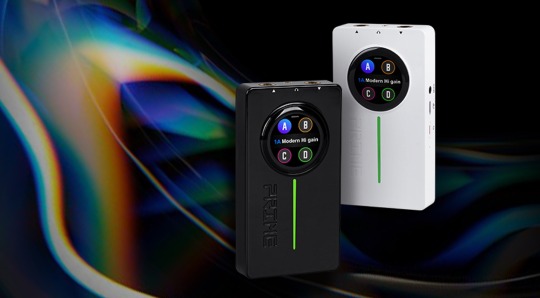
View On WordPress
#amps#audio#Bluetooth#compact#Delays#Drums#effects#Guitar#Instagram#integrated battery#interface#live#Looper#MIDI#Modulations#MOOER Prime app#Mooer Prime P2#MOOER Tone Cloud#Recording#Reverbs#smartphone#stereo#studio#touchscreen#video#YouTube
0 notes
Text
A leap of faith and physics
We thought for a civilization to form, one needed liquid water, a stable planet with a hot core, and tardium crystals. Apparently, this is not so.
Because we just received a vibromessage over the tachyon network from an unknown source.
Which in itself would not be too unusual. Plenty of newly realized civilizations figure out how to configure tardium to send tachyon messages across isospace. Hoping someone will answer. We always do. It always takes some time to go from simple repeating messages to understanding one another. Most civilizations don't come up with the galactic standard modulation on their own. Nor do we know their form of communication all that well, language, culture, all of that.
First contact is always a lengthy affair, until the new species is integrated into the intergalactic community. Then follows the exchange of knowledge and culture, the setting up of historical archives and sharing of starcharts. Since light travels only at luxionic speed, the charts provide a valuable look at the past. Once the new civilization has been caught up to date, things tend to settle. Updates are fewer and far in between, and culture tends to somewhat homogenize. Not completely, of course, as everyone has different living circumstances, but with all the exchange between us, some settling is bound to happen.
But we know where tardium reserves are, have felt the reverb of our scans, we know where civilizations could potentially pop up. The message we received was unusual not because its source was unknown, but because it came from a sector without any sufficient tardium deposits.
That... shouldn't even be possible!
The signal is also a bit noisy. Strange. Usually, the bigger the tardium array, the more self-stabilization should occurr. And for interstellar communication, you tend to need quite large arrays. So then why was there so much noise?
It was clearly a signal, and according to the triangulators, it came from the outer third of a dark spiral galaxy. We call them that, since they were never really observed, at least not with any isocartography. We only know they're there due to shared star charts. No idea what's going on with them at the current isotime. We can't know, without any tardium resonance to pick up.
Anyway, of course we answered. Their signal had been prime numbers, if we demodulated it correctly, followed by things we couldn't really make sense of. It was standard practice to begin communications with mathematics, and fundamental harmonics. It's strange that they did that right away, but not unheard of. We sent back primes, and then a couple of playful harmonics. Music. What we received back was weird, because we thought it was music, but it wasn't.
It turned out to be a starchart, and not just any kind. Pulsars. We sent back a chart of their galaxy, as reconstructed from several older starcharts. Then, we waited for their answer. And waited. And waited. An entire solar cycle (of our species) later, we finally got another answer.
And it just would not stop. We recognized it was a series of images, or rather, rapid successions of images, together with harmonics on a different band as well. This was video! The footage depicted a bipedal species, with symbolics next to different features. The images cycled through different body parts, with different descryptions. We had a really hard time catching and saving all the data, a task which had to be offloaded to the communal computation grid, as our own planet simply did not have the capacity to do it alone. This should have tipped us off to what we were going to be dealing with, but it didn't.
We continued, almost business as usual, just a fair bit faster. Then objects were being shown, often together with the bipedals, and their corresponding glyphics were depicted right next to them. Also, each image was accompanied by a sound file. They really made learning their language easy for us. We learned that they called themselves Humans, and their home was Earth, a planet orbiting a yellow star. They were a surface dwelling species! Those are pretty rare, as most can not survive the exposure to open space for some reason. We then sent back images and glyphics of our own, matching them in their intent. We sent images of life forms, images of our own body parts, images of objects and always accompanied by isostandard glyphics.
Usually, once communication has come to a basic understanding, the exchange of culture would begin.
But the Humans had started out with primes and starcharts, so of course, their next communication wasn't about culture. We... honestly didn't know what exactly it was, for a while. Until some of the mathematicians from across the network found patterns. They were sharing mathematics with us!
Eager to help, we sent back entire databases full of insights. They requested more soon. So we sent more. And more. And more. We wondered how they could even store all that we sent them. We asked. They sent back something we didn't understand. We hoped the mathematicians could figure it out, but nope.
Eventually, we sent steam engine configurations, as well as the corresponding heating and shunting tardion-arrays used to power them. They sent back their own designs for steam engines. And other engines that seemed similar, but shoudn't work with steam. The machine configurations, piston layouts and such, were fairly primitive. As was to be expected from a new species. But they never sent us schematics of their heating or shunting arrays. When we asked how they kept things cool without shunting arrays, they sent back another steam engine. But, when we called it that, they corrected us. What they had shown us was a heat pump. They used the opposite effect, instead of creating movement from a temperature difference, they created a temperature difference from movement. We asked them why they wouldn't just use shunting arrays. They asked what those were.
And this is how we found out why they were in dark space. Why their signal was so noisy. And why they had never depicted heating or shunting arrays in their schematics.
They had practically no tardium. They simply did not have enough of it to make arrays, as we thought all civilizations do. The largest piece of tardium they had was the centerpiece of a gigantic machine. It was about the size of a human "nail", which is a vestigial claw originally used for superior grip on one of the native plant species of their planet.
We did not know how to respond. We could not comprehend how a civilization could form without tardium crystals. They asked us if we knew where more could be found, preferably near them. We didn't understand what they meant. Then they asked us how to locate reserves. We gave them the modulations that we use to scan for the crystals' tachyon resonance.
They thanked us, and ceased their questions. Then, communication became choppy. Only occasionally would we receive an exchange of culture. Their questions about mathematics and tardium crystals ceased.
---------------------
When we first received back an answer from the deep space tachyon dish, we were extatic. And shocked. And kind of in disbelief. Nobody had really known if it would work. Still, everyone in the control room agreed that we should make sure it was really a signal, before we dropped that bombshell to the public.
We focused a couple more dyson collectors onto the dish, and changed the signal. Instead of primes and harmonics, this time, we encoded the pulsar chart, multiple times, in every encoding we could think of, and sent them all.
Only a few hours later, we received another signal from the previous location. The encoding was our own, easily recognized. With shaky hands, i pressed the 'open image file' button.
When i was greeted by a picture of the Milky Way, everyone in the room lost their collective shit.
"Holy Fuck!" "Oh my god." Someone fainted. Multiple people cried. Nobody minded any of that.
~~~
The prime administrator creased her brow. The direct line was ringing. This better be important. "Hello? Prime administrator here." From the other end, she could hear someone suppressing tears, and whimpering: "Tachyon dish project operator here. We... we."
"Everything ok over there?", she asked. What could possibly have happened that had the scientist crying? Was there an accident with the dyson swarm or something? Did people die? No, she trusted the operator of that experiment to not call unless it mattered to the entire human race.
A wet chuckle. "Better than ok. Maam? We... We're not alone."
Not alone? What does that...? Oh. OH! oh
"Are.. you sure?" Dammit. Now even her own voice was shaking.
"We sent a pulsar chart and got a beautiful image of the Milky Way back, in the same image file type. Pretty sure at this point."
~~~
The following year was downright insane. The mere confirmation that we weren't alone in the universe spurred us all on. Artists did their best to show all sides of us, scientists got together to determine what questions we should ask, even the long obsolete military awakened from its slumber, churning out tactical analyses of possible tachyon based weaponry, and how to defend against it.
Some people were panicking, others in denial, but most relished the opportunities that might open up.
Policies were made, on how to handle aliens that would come to the solar system. Tachyon mechanics, an until now unproven theory, made leaps and bounds, scientists working as hard as they could to understand it better.
The dyson collectors were turned to multiple new research projects, powering large machines that channeled vibrations into the tiny crystals we had found to pick up on tachyon vibrations. The largest one that we had discovered while asteroid mining was still in the communication dish, but the smaller shrapnel, a couple millimeters in size at the most, were being utilized.
Eventually, after a year was up, communications resumed. The linguists sent data, and worked closely with the astronomers that had made the initial transmissions. We also received back data, and the scientific community devoured every piece of information. We learned their language as fast as we could.
But our requests for the sharing of scientific knowledge appeared to fall on deaf ears. Whenever we sent natural constants, or physical laws, we got nothing back. Well, almost. Our prodding did yield one answer: How to locate the crystals. Which were apparently common? Though our scans painted a different picture. We did have some scattered about the asteroid belt, yes. But the largest one we detected was only 3cm in diameter. A little bigger than the one in the communication dish, sure, but not that much.
We came to accept this, figuring that maybe there was some kind of prime directive that forbade the sharing of further technology. Actually, perhaps we leaned a bit too far into our Star Trek analogy. Because most of us would not get it out of our heads to try to build a warp drive. Well, not really a spacetime bending drive, but something that could go faster than light. Because, obviously, thanks to our discovery, we now knew that while the speed of light may be finite, the speed of information was not.
-----------------------------
After ten cycles of cultural exchange, the humans sent a request for isocoordinates of the nearest known civilization to their own. This request kind of drowned in the noise, we didn't really think about it much, we just transmitted our coordinates. Turns out, the nearest ones were us, in what the Humans call the Andromeda Galaxy.
Shortly after the request, they went totally vibrosilent. We tried and tried to contact them, but to no avail. This, while tragic, was a reality of civilization, though. Extinction events could always happen. Sometimes the affected civilization would realize in advance and send a couple warnings, but nobody could help them from afar, of course. So that's what we figured happened to Humanity. Maybe their sun blew up, or they got knocked away from it by a passing object, anything could have happened.
Many cycles passed. I had aged, my once young and springy exoskeleton now wobbly and soft, though my mind was still sharp enough to crew a communications array.
None of us were prepared for the schockwave resonating through our sensor grids. Multiple arrays straight up shattered. Luckily, as big as they were, there was nobody close to them, so no deaths. What the rest of them picked up though made no sense. We could determine there was a pulse, but no normal communication had that level of power, nor resonance.
Then, half a planetary rotation later, there was a new luminance in the sky. We were about to renew our arrays and update our starchart, when the light source moved. Toward the planet.
What?
And then, my assigned communications array resonated.
"This is the Human vessel Enterprise, calling anyone on the planet. Can you read us?" the crystal sang in choppy English, the language of the Humans. The ones we thought were extinct.
I scuttled to my post at the resonator, tuning it to reply:
"This is communications, we read you, but i don't understand? We are recovering from an unprecedented resonance pulse that shattered multiple arrays, sorry if the modulation is a bit off."
The answer was swift: "Sorry about that, our engines are a bit out of tune at this point. That pulse might have been us. Glad to hear you all down there, is anyone injured?"
"Your engines? And uh. No, nobody injured."
"Yes our engines, again, we apologize for that. But glad to know everyone is alright.
Requesting permission to land on the surface."
This was a momentous occasion, which i didn't realize until later on. The entire tachyon network would eventually refer to this exact communication as a reference time. This exact moment would come to be known as 0:0 PFJ
0 Cycles and 0 rotations Past First Jump.
The only thing i remember is absently giving permission, not quite understanding what exactly they were requesting here. If i had, i would have convened with the councils beforehand.
Then, the cave began to shake. It wasn't coming from any of the arrays. It was coming from the surface.
~~~
They. They were here. The Humans were here. On the surface. Of. Of our planet. What? How?!
Most importantly, why?!
Then i remembered the stories about their exploration of the surface of their own planet. How they had sent people to their poles, despite their biology not being fit to survive there. And several did die! How they climed mountains. Made pressurized vessels to dive below the surface of their open ocean. We asked them why. They told us.
I realized at that moment, not how they were here. But why.
"Because we could, and no human had been there before," they had answered back then.
431 notes
·
View notes
Text
Dropkick- Primary Colours (Bobo Integral Records/Sound Asleep Records)

Dropkick have returned again with a great album filled with jangle pop, Americana, Alt-Country, and straight-out rock. I’ve been following them for years because I was hooked with their Teenage Fanclub sound. I love the jangly guitars and harmonies. This time around the band features Ian Grier on bass guitar and keyboards; Alan Shields on guitar and vocals; and Andrew Taylor on guitar, vocals, and drums. All songs were written by Taylor except “Highs and Lows” was written by Shields. It was recorded at Dropkick HQ, Inch House, Edinburgh, Scotland; produced and mixed by Andrew Taylor; and mastered by Will Killingsworth at Dead Air. First off, “Left Behind,” jangle pops right out of the gate. Beautiful guitars and harmonies sucking me back in again. This part gets me every time, “I may have broken your word flow, I may have put you right off, I may upset you I know that now, I know that now.” Next, “Snowflakes” kicks in with killer guitars and beats. “We settle like snowflakes on the ground, turning upside down, Knowing we’re ok, feeling proud but never make a sound, Every time we fade, I look around.” It’s a straight-out rocker. Here's the video:
youtube
Then we have the title track, “Primary Colours,” which brings back the jangly guitars with gorgeous harmonies. “What do you dream of when you’re asleep? What are you hiding, the secrets that you keep? Wait another day it might be fine. Turning all the grey to primary colours.” Here's an acoustic version:
youtube
Track 4, “Highs and Lows,” as stated before, is the only non-penned Taylor song. It’s an all-out, alt-country rocker by the other guitarist Alan Shields. Alan’s Southern accent really adds to the chorus, “Well, I guess you know, That it makes a change for you to sit at home, And watch me go from the window.” More killer guitar solos as well. Next up, “Too Much of the Same” is quite the opposite. It’s a slow-moving Americana, acoustic song complete with intricate mandolin and a heartfelt harmonica solo, both performed by Andrew Taylor. These really add to the sorrow in the lyrics, “I’d find it hard to complain if I hadn’t taken the blame, Failing to laugh when it’s wrong, Thinking too much for too long, Nothing I’d try was enough, I know why, It was always too much of the same.” Track 6, “Dreams Expire” enters with swirling guitars and beautiful harmonies. Its floating melody is a song you just don’t want to end. “You find ideas go by, But try to work out why, My dreams expire, Without this fire, My heart is lying again.” It ends with choppy keyboard beats over the jangly guitars. Here's the video:
youtube
“Vanishing Act” has a Jason and The Scorchers vibe with its whammy, reverb-laden guitar opening. Definitely the hardest rocker (and shortest track) on the album. It would be great to hear this one live! Track 8 “Misunderstandings” brings the listener back down to Earth with this Alt-country gem. With a driving rhythm section, intricate guitar, and soaring vocals; it’s another great song with lyrics filled with bitterness. “Is this a mistake? Do I know you, know you at all? It’s getting too late to know you, to know you at all, Are you pretending to hear misunderstandings? I’d not expect you to be near me.” “In a Different Light” is an upbeat rocker with blistering guitar solos and harmonica over Byrds-ish harmonies, “But now that you’ve turned too, I don’t have to trust you, There’s nothing you could do even if you want to.” The album closes with “Waiting for the Rain” and it’s a great way to end. More jangle pop with beautiful lyrics, “Yet I don’t care but you want me anyway, The cover’s up and you’re waiting for the rain, I think I might be running out of patience, I think I finally worked it out.” Looks like the band will be playing some shows, but I’m not seeing any scheduled for the US. We can only hope. ERIC EGGLESON
For vinyl: https://bobointegral.bandcamp.com/ Also available at Jigsaw Records.
For CD: https://www.soundasleeprecords.com/index2.htm Also available at Kool Kat Musik.
5 notes
·
View notes
Text
Don't Know Why by Norah Jones
The Sonic Elegance of Norah Jones' "Don't Know Why": A Timeless Recording
In the early 2000s, the music industry was awash in a sea of pop and R&B, with production techniques increasingly favoring digital clarity and electronic elements. Yet amidst this backdrop emerged Norah Jones' "Don't Know Why," a song that seemed to defy the zeitgeist with its understated elegance and acoustic warmth. Released as part of her debut album Come Away with Me in 2002, the song quickly became a beacon of musical authenticity and sonic purity. Its success was unexpected, yet perhaps inevitable, given its timeless quality and impeccable production.
At the helm of this production was Arif Mardin, a legendary producer known for his work with artists such as Aretha Franklin and Chaka Khan. Mardin, along with recording engineer Jay Newland, crafted a sound that was intimate and organic, a stark contrast to the polished, synthetic productions dominating the charts. Recorded at New York's Sorcerer Sound and Allaire Studios, the sessions were characterized by their live, ensemble approach, capturing the spontaneity and synergy of the musicians in the room.
The production of "Don't Know Why" is a masterclass in subtlety and nuance. The track's instrumentation is stripped down yet richly layered, featuring Jones on piano and vocals, Jesse Harris on guitar, Lee Alexander on bass, and Dan Rieser on drums. The mix is a study in balance, with each element occupying its own space in the stereo field, allowing the warmth and clarity of the acoustic instruments to shine through.
The recording exudes a natural reverb, likely a result of the room acoustics at Allaire Studios, complemented by judicious use of outboard gear to enhance the lush, inviting atmosphere. The gentle compression applied to Jones' vocals allows her breathy, emotive delivery to remain front and center, drawing listeners into the song's intimate narrative. It's likely that classic microphones such as the Neumann U47 were used to capture the nuances of her voice, paired with analog consoles that added a touch of vintage warmth to the overall sound.
"Don't Know Why" stands as a testament to the enduring power of acoustic music and meticulous production. Its success paved the way for a resurgence of jazz-influenced pop and helped to redefine the mainstream's appreciation for organic soundscapes. Audiophiles continue to celebrate the track for its sonic integrity and emotional resonance, often citing it as a reference for testing high-fidelity audio equipment.
What to Listen For:
Vocals: Notice the clarity and presence of Norah Jones' voice, with its subtle vibrato and delicate phrasing, enveloped in a natural-sounding reverb.
Piano and Guitar: Pay attention to the interplay between the piano's mellow tones and the gentle strumming of the acoustic guitar, each occupying distinct spaces in the stereo field.
Bass and Drums: Listen to the warmth and roundness of the double bass, complemented by the soft brushwork on the drums, creating a laid-back yet rhythmically engaging foundation.
Dynamics and Space: Observe how the song breathes, with dynamic shifts that enhance its emotional depth, and the spaciousness of the mix that allows each instrument to resonate clearly without clashing.
In an era where music often leans towards the synthetic and the loud, "Don't Know Why" remains a quintessential example of how subtlety and craftsmanship can create a recording that is both captivating and enduring.
4 notes
·
View notes
Text


youtube
This song imagines that in 1990, Nirvana decide to stay with Sub Pop for their second album, 'Sheep'. They have already recorded one batch of songs with producer Butch Vig at Smart Studios and return to finish off the album. 'Opinion' which debuted as a solo acoustic performance on the KAOS (FM) radio show has now been recorded as a full band version.
I created this version as a long time Nirvana fan who would have loved to hear a studio recording on this song. I used a combination of Nirvana rarities cover band To Boddah and Steve Welsh's amazing covers as the basis of the instrumental. I cannot urge you enough to check out the rest of their work on Youtube.
I used AI to recreate Kurt's vocal and I also used AI to create backing harmonies by Dave (in this timeline Dave would still have joined Nirvana as it was inevitable by this point).
While ideally I would liked to have worked on the instrumental myself recreating period appropriate amps and voice models, I decided not to let perfect be the enemy of good. I layered the drums with a Steve Albini sampled drum kit, which while not true to the 1990 timeframe I felt was close enough.
I used reverb impulse responses from Smart Studio and copied the EQ curve from the original Smart Studio sessions to help get a little bit closer.
Overall I aimed for a sound between the Smart Studio Sessions and the Devonshire mixes of Nevermind, leaning towards the latter as I believe that's where the overall sound would have went.
The album cover is an unused design from 'Muddy Banks of the Wishkah' by their legendary long term art director Robert Fisher (whose incredible work chronicling his time with Nirvana can be found on Instagram as 'nirvanabucket'.
While it is doubtful that Nirvana and Robert Fisher would ever have met had they not signed to Geffen (meaning that Sub Pop art director Lisa Orth would have likely still been designing their covers), his work is such an integral part of Nirvana's visual identity that I decided to bend the timeline a bit to include him.
#nirvana#kurt cobain#grunge music#krist novoselic#in utero#dave grohl#courtney love#grunge#alternative rock#alt rock#nevermind#bleach#incesticide#outcesticide#90s music#90s aesthetic#Youtube
8 notes
·
View notes
Text
Lightspeed Reverb Integration - sync orders and keep your inventory up to date
Integrating Lightspeed Reverb with SKUPlugs offers a robust solution for businesses seeking seamless synchronization of orders and maintaining accurate inventory levels. SKUPlugs serves as a bridge between Lightspeed Reverb and various other platforms, facilitating a streamlined exchange of data. With this integration, businesses can effortlessly sync orders bidirectionally, ensuring that transactions made on Lightspeed Reverb are accurately reflected in SKUPlugs and vice versa. This bidirectional synchronization enhances operational efficiency, reduces manual data entry errors, and provides a consolidated view of order information across platforms.

One of the key advantages of utilizing SKUPlugs for Lightspeed Reverb integration lies in its ability to keep inventory up to date in real-time. The integration ensures that changes in stock levels, whether initiated through Lightspeed Reverb or SKUPlugs, are promptly reflected in both systems. This real-time inventory synchronization not only helps prevent overselling or stockouts but also provides businesses with a centralized and accurate inventory management system. The result is an optimized and automated workflow that enables businesses to focus on growth and customer satisfaction rather than grappling with inventory discrepancies.
Furthermore, SKUPlugs offers a user-friendly interface for configuring the integration, making it accessible for businesses of various sizes. The platform allows users to customize settings, map data fields, and set up synchronization schedules according to their specific requirements. By providing a seamless and customizable integration solution, SKUPlugs empowers businesses using Lightspeed Reverb to enhance their overall e-commerce operations, improve customer experiences, and maintain a more efficient and synchronized business ecosystem.
More Info – Lightspeed integration with Reverb
#Lightspeed and Reverb integration#Lightspeed integration#Reverb integration#Lightspeed Reverb integration#Lightspeed integration with Reverb
0 notes
Text
Native Instruments – Una Corda Download
Native Instruments – Una Corda: A Distinctive Piano Experience

Product Details: A DISTINCTIVE, PURE PIANO
Explore the evocative tones of Native Instruments – Una Corda, a handcrafted upright piano that redefines the possibilities of musical expression. With a full range of sound characters – from soft and resonant to percussive and textural – this instrument offers unparalleled creativity and realism. Meticulously sampled, Una Corda delivers everything from intimate realism to lush, resonant overtones, making it an essential addition to your sound library.
Introducing UNA CORDA
Delicate and Different
Una Corda faithfully captures the signature sound of a unique, custom-made piano designed by David Klavins in collaboration with composer Nils Frahm. Unlike traditional pianos, Una Corda features one string per key, resulting in an exquisite tone that’s ideal for film scoring, electronic music, pop, or jazz. Whether you’re crafting serene melodies or creating experimental textures, Una Corda’s distinctive sound will captivate your audience.
Three Sources of Creativity
Una Corda offers three distinct sound banks, each designed to inspire:
Pure: Captures the resonant sound of a single string struck by the hammer, offering clarity and richness.
Felt: Introduces felt material between hammers and strings, reducing attack noise and delivering a gentle, smooth sound reminiscent of an unplugged vintage electric piano.
Cotton: Adds a noisier, percussive attack with more pronounced overtones, ideal for creating unique sonic textures.
Each sound bank provides a starting point for shaping your creative vision.
Enhanced Sound Design
Take your sound further with Una Corda’s advanced sound design capabilities. Add texture by incorporating:
Noise from fabric preparations
Mechanical sounds and pedal actions
Room ambiance
Enhance realism or venture into experimental territory by integrating vintage outboard gear effects like hiss, compression, and saturation. From dry, gritty tones to liquid pads and swirling soundscapes, Una Corda adapts to your creative needs.
Adjust Your Tone Easily
Una Corda’s intuitive interface puts full control of the instrument at your fingertips:
Sound Banks: Choose from Pure, Felt, or Cotton.
Workbench: Sculpt core characteristics, from dynamics to overtones.
Response Section: Adjust tonal dynamics and add resonant overtones.
Finish Section: Apply vintage effect chains, reverbs, and other tools to refine your sound.
Effortlessly transform a pure piano into a noisy, percussive instrument or an ambient soundscape with these powerful tools.
Made for KOMPLETE KONTROL
Designed for seamless integration, Una Corda is fully compatible with Native Instruments’ KOMPLETE KONTROL keyboards. Experience the ultimate performance with the KOMPLETE KONTROL S88, featuring fully weighted hammer-action keys for an authentic piano feel.
Uncover the Original Una Corda
Discover the story behind Una Corda’s creation. In collaboration with Nils Frahm, David Klavins crafted a contemporary upright piano that pushes the boundaries of traditional design. Watch the video “Creating Una Corda” to gain insights into this groundbreaking instrument’s origins and evolution.
Why Choose Una Corda?
Una Corda is more than just a piano. It’s a gateway to a world of delicate, distinctive, and dynamic sounds that inspire creativity. From its rich tonal palette to its intuitive design, Una Corda is perfect for composers, producers, and musicians seeking fresh, evocative sounds for their projects.
Explore Una Corda Today
Experience the unmatched sound of Native Instruments – Una Corda and elevate your music production to new heights. Find out more and listen to the audio demos on the product page.
#vstplugins#audio#sonokinetic#expressiveinstruments#creativecomposing#gamesoundtracks#filmscoring#soundlibrary#musiclibrary#musicproduction#Native Instruments – Una Corda: A Distinctive Piano Experience#Product Details: A DISTINCTIVE#PURE PIANO#Explore the evocative tones of Native Instruments – Una Corda#a handcrafted upright piano that redefines the possibilities of musical expression. With a full range of sound characters – from soft and r#Una Corda delivers everything from intimate realism to lush#resonant overtones#making it an essential addition to your sound library.#Introducing UNA CORDA#Delicate and Different#Una Corda faithfully captures the signature sound of a unique#custom-made piano designed by David Klavins in collaboration with composer Nils Frahm. Unlike traditional pianos#Una Corda features one string per key#resulting in an exquisite tone that’s ideal for film scoring#electronic music#pop#or jazz. Whether you’re crafting serene melodies or creating experimental textures#Una Corda’s distinctive sound will captivate your audience.#Three Sources of Creativity#Una Corda offers three distinct sound banks
2 notes
·
View notes
Text
How Can You Create a Personalized Sound Experience Using Customizable DJ Controllers?
Personalization has become a defining trend in modern DJing, with customizable DJ controllers enabling artists to develop their signature sound and streamline their workflow. These innovative tools allow DJs to tailor their setups to fit their unique style and performance preferences, transforming a traditional set into a highly personalized experience. Here's how you can harness customizable DJ controllers to create a sound experience that's uniquely yours.
1. Understanding Customizable DJ Controllers
Customizable DJ controllers are devices that allow users to adjust key functionalities, such as button mapping, pad assignments, and effects control. Unlike traditional controllers with fixed layouts, these offer flexibility to adapt their configurations, empowering DJs to craft a setup that complements their music style and techniques. Whether you’re a beat-heavy hip-hop DJ or an EDM artist focusing on smooth transitions, these controllers can help you achieve precision and creativity.
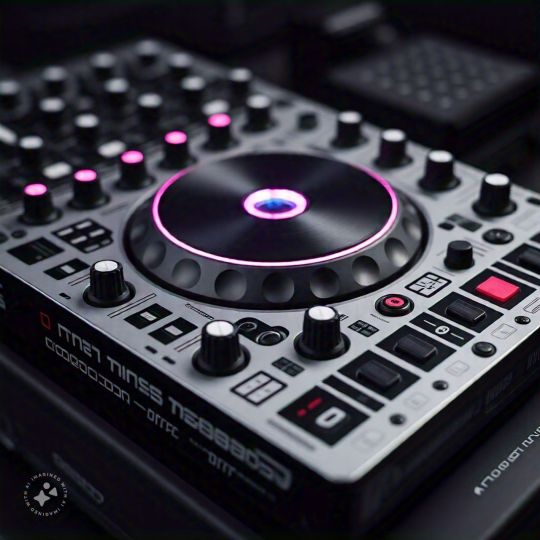
2. Customizing Layouts for Efficiency
One of the biggest advantages of customizable controllers is the ability to remap buttons and knobs to match your workflow. Most modern controllers come with dedicated software that lets you:
Reassign Hot Cues and Effects Pads: Map your most-used effects and samples to accessible buttons for quicker triggering.
Create Layered Controls: Set up secondary functions for knobs and buttons to maximize functionality without cluttering the interface.
Optimize for One-Handed Operation: Map essential controls closer together, perfect for DJs who want to multitask during a live set.
By tailoring the layout, you can reduce the time spent searching for controls and focus more on the music.
3. Exploring Customizable Sound Effects
Custom effects are a game-changer for crafting a unique sonic identity. Many controllers allow you to integrate third-party plugins or tweak built-in effects like delays, filters, and reverb. Here’s how you can make the most of this feature:
Layer Effects Creatively: Combine echo and reverb for atmospheric transitions or use distortion with a phaser for grittier drops.
Adjust Parameters on the Fly: Customize effect depth, rate, and resonance to suit your track's mood in real time.
Save Presets: Many controllers let you save your favorite effect combinations, making it easy to recall them during performances.
These tweaks give your sound a distinct character, setting you apart from other DJs.
4. Utilizing MIDI Mapping
MIDI mapping is at the heart of controller customization. It enables DJs to assign software functions to hardware controls, providing limitless creative possibilities. For instance:
Control Lighting with Your Controller: Synchronize lighting effects with your music for an immersive audiovisual experience.
Add Unique Sampling Features: Assign unconventional sounds, like ambient textures or vocal snippets, to your pads for unexpected transitions.
Use Multiple Layers: Set up different MIDI layers to manage decks, effects, and samples simultaneously.
Mastering MIDI mapping can dramatically enhance your live performance and workflow.
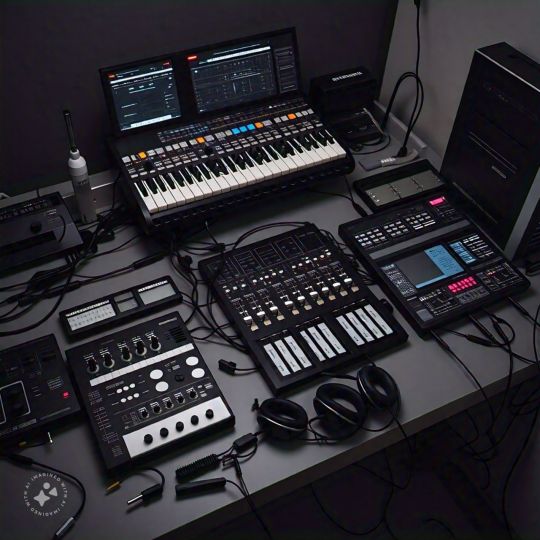
5. Integrating Visuals and Additional Gear
Modern DJ controllers often support integration with other equipment like samplers, synthesizers, or visual systems. By linking your controller to these devices, you can:
Sync Visual Effects: Use your controller to trigger visuals that match your music, creating a cohesive sensory experience.
Incorporate Live Instruments: Map inputs for synthesizers or drum machines to blend live elements into your set.
Expand Your Sound Palette: Add external sound processors or effects racks for greater sonic diversity.
Such integrations open doors to more experimental and captivating performances.
6. Advanced Features for Personalized Performances
High-end customizable DJ controllers come equipped with advanced features to elevate your sound:
Key Syncing: Match the harmonic keys of different tracks to ensure seamless transitions.
Dynamic EQs: Adjust frequency bands interactively for on-the-fly sound shaping.
Custom Loop Settings: Set loop lengths that align with your style, such as long ambient loops or rapid 4-beat repetitions.
Learning these advanced tools will not only improve your technical skills but also refine your artistry.
7. Crafting Your Unique Sound
Customizable DJ controllers are more than just tools—they’re a canvas for your creativity. To truly personalize your sound:
Experiment with Unconventional Techniques: Use pitch bends creatively, mix genres, or introduce unpredictable elements like silence for dramatic effect.
Record and Review: Listen to your sets and analyze what works to refine your customizations.
Stay Updated: Regularly explore new software updates and hardware integrations to keep your setup fresh and innovative.
Over time, these practices will help you build a signature sound that resonates with audiences.
8. The Role of Customizable Controllers in Modern DJ Culture
As DJing continues to evolve, the emphasis on personalization is becoming central to the craft. Customizable controllers empower DJs to break free from traditional molds and experiment with new techniques. This shift is not just about technology but about redefining how music is performed and experienced.
Customizable DJ controllers are a gateway to unlimited creativity. They allow you to tailor your equipment to your needs, transforming your performances into unique experiences that captivate your audience. To ensure you’re investing in the right tools, it’s important to source your equipment from professional and reputable audio shops like VIP PRO AUDIO, where quality and expertise are guaranteed.
2 notes
·
View notes
Text
Download Native Instruments – Stradivari Violin
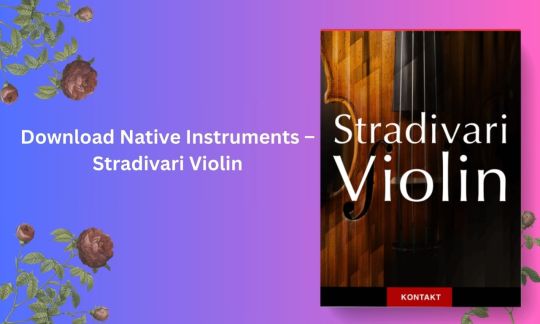
Discover the sublime sound of the Stradivari Violin with Native Instruments' latest offering. This meticulously crafted virtual instrument brings the unparalleled quality of one of history's most famous violins to your digital audio workstation (DAW). Whether you are a seasoned composer or a budding musician, the Stradivari Violin by Native Instruments is an essential addition to your toolkit, providing authentic and expressive violin sounds that are perfect for any genre.
Download Native Instruments – Stradivari Violin
A Masterpiece of Musical History
The Stradivari Violin is named after Antonio Stradivari, the legendary luthier from Cremona, Italy, whose violins are renowned for their exceptional sound quality. The Stradivari Violin virtual instrument captures this legacy with precision. Native Instruments, in collaboration with e-instruments, recorded an original Stradivarius from 1727, known as the "Vesuvius," to deliver a faithful reproduction. Every nuance of the instrument, from its rich tones to its subtle articulations, has been painstakingly sampled.
Unmatched Sound Quality
The Native Instruments Stradivari Violin is not just another string library; it is an immersive experience that brings the warmth and depth of a Stradivarius to your compositions. The instrument offers multiple articulations, including legato, pizzicato, spiccato, and tremolo, among others. This variety allows you to create highly realistic and dynamic performances. The advanced sampling techniques used ensure that every note you play resonates with the authenticity and emotional depth of a real Stradivarius.
Intuitive and User-Friendly Interface
Ease of use is a hallmark of Native Instruments' products, and the Stradivari Violin is no exception. The interface is designed to be intuitive, allowing you to focus on your creativity. Key features include easy access to different articulations and performance modes, customizable keyswitches, and an expression slider for real-time dynamics control. The built-in effects, such as reverb and EQ, let you shape the sound to fit perfectly into your mix.
Versatility for Any Genre
While the Stradivari Violin excels in classical and orchestral music, its versatility makes it suitable for a wide range of genres. Whether you're working on a cinematic score, a pop ballad, or an experimental electronic track, this instrument provides the expressive power and tonal richness needed to elevate your music. The natural, lifelike sound of the Stradivari Violin can add a layer of sophistication and emotion to any production.
Seamless Integration with Kontakt
The Stradivari Violin is designed to work seamlessly with Native Instruments' Kontakt sampler. If you already use Kontakt, integration is straightforward, allowing you to start creating beautiful music right away. The instrument takes advantage of Kontakt’s powerful scripting engine, providing a responsive and expressive playing experience. For those new to Kontakt, the Stradivari Violin comes with detailed instructions and support to help you get started.
Realistic Performances with Advanced Technology
The technology behind the Stradivari Violin ensures that your performances sound as realistic as possible. The instrument features advanced legato transitions, bow noise emulation, and true vibrato control. These features combine to create a playing experience that is both natural and inspiring. The sampled dynamics and round-robin variations prevent the repetitive and mechanical feel often associated with virtual instruments, making the Stradivari Violin a joy to play.
Join the Ranks of Professional Composers
Many professional composers and musicians rely on Native Instruments for their scoring and production needs. With the Stradivari Violin, you too can access the same high-quality sounds used in top-tier productions. Whether you’re scoring a film, producing an album, or creating music for games, the Stradivari Violin provides the sonic excellence that today’s top projects demand.
Get Your Copy Today
Elevate your musical creations with the unparalleled sound of the Stradivari Violin. Click the link below to purchase and download your copy from ExtraPlugins. Join the ranks of musicians and composers who trust Native Instruments to deliver top-quality virtual instruments.
Download Native Instruments – Stradivari Violin
With this comprehensive and detailed description, your product page will not only attract potential customers but also rank higher on search engines, thanks to the strategic use of keywords and hashtags. Start creating breathtaking music with the Native Instruments Stradivari Violin today!
#SEO#NativeInstruments#StradivariViolin#VirtualInstruments#MusicProduction#Kontakt#DigitalMusic#StringLibrary#SampleLibrary#ViolinVST#MusicComposing#OrchestralMusic#FilmScoring#SoundDesign#MusicTechnology#AudioEngineering#VirtualStrings#MusicSoftware#ProfessionalAudio#DigitalComposer#SampledInstruments
2 notes
·
View notes
Text
plunderphonic ambient, for healing

"dogyears" by former hero.
first off, hey. sorry for not keeping up with the blog so much! admittedly a lot went down in my personal life and i just lost footing with a lot of the stuff i like doing and generally am up to creatively and otherwise.
things are okay now.
anyway, this song i feel very strongly towards, generally speaking. something about well-utilized plunderphonic stuff is so emotionally evocative to me (always will be!) but also noting the chord progression it's... so, familiar. it reminds me of a lot, very broadly... i hope it has similar sort of, psuedo-nostalgic effects on you (the viewer!) if you do listen.
i consider this healing-tier because of the actual structure. the way the dry/wet signal for the reverb is integrated into the song, it's somehow very noticeable but it still goes to the back of your head regarding how it's executed. love it dearly.
~ E.K.S.G.
2 notes
·
View notes
Text
ESTECHO's tape delay list:
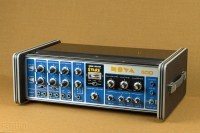
Evans Nova 400
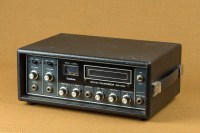
Guyatone EM-606
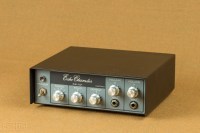
Kastam SS-101
__________
These above are only three of the list of nearly 30 different tape echo devices ESTECHO provides with useful pictures, maintainance and repair infos:
Ace Tone Pro Echo EC-10 Grandfather of Roland Space Echo series, designed by Roland founder Ikutaro Kakehashi.
Ace Tone EC-20 Later model by Ace Tone corp. Tension tape loop with individual head selection.
Denon Dic EM-1000 Rare, unusual and extremely heavy 1/4 inch tape machine from Denon corporation. Perhaps a prototype?
Elk EM-4 Compact model based on Sony RE tape cartridge.
Elk Echo Machine EM-1 Earlier model from Elk, using Sony RE tape cartridge
Evans SE-780 aka Multivox MX-312. Fully-featured tape delay with spring reverb, sound-on-sound and unique tape transport design.
Evans ES-5 Entry-level unit with tension tape loop and sliding playback head.
Evans EE-3 Entry-level unit with limited features, sliding playback head and tension tape loop.
Evans Nova 400 PA amplifier with integrated tape delay (tension tape loop) and channel sends.
Evans Vocal Echo VE-200 PA amplifier with integrated tape delay (tension tape loop) and channel sends.
Guyatone EM-77 Sony RE cartridge based unit with two playback heads.
Guyatone EM-606 Entry-level, 8-track cartridge unit with limited features.
Guyatone EM-808D 8-track cartridge unit with good amount of features.
Guyatone EM-88 Top-of-the-line Guyatone unit with tension tape loop.
Hawk 2-Channel Echo HE-2250 Stereo tape delay with fully independent delay lines and channels.
Iwase Voice Echo Machine Very old unit from little known Iwase corporation, featuring tube circuitry.
Kastam SS-102 8-track cartridge unit with good amount of features.
Kastam Concert SS-100 Entry-level 8-track cartridge unit.
Kastam SS-101 Very limited entry-level 8-track cartridge unit.
Kastam SS-301 Very limited entry-level 8-track cartridge unit.
Korg Stage Echo SE-500 Professional tape delay with full controls, very long repeat time and unique features such as CV input for delay time.
Mirano Echo Chamber 3 Early tape delay using tube circuitry.
Mirano T-4 Solid state model from the Mirano corporation.
Rexer RTE-3000 Late generation unit with free running tape loop and stereo output.
Roland Space Echo RE-100 Early Space Echo model using Sony RE cartridge
Roland Space Echo RE-200 Early Space Echo model using Sony RE cartridge, with spring reverb
Univox EC-80A Simple 1-head tape delay using Apollon-type cartridge.
_________
"ESTECHO’s music relies on many old and capricious musical instruments and devices. Keeping them in working condition is often a challenge, and for many of them, operation, maintenance and servicing information is very hard to come by. Often, pages such as this one are the only source of info available, pre-internet manufacturers having long since gone out of business or simply not remembering ever having these products for sale. For this reason, we’ve decided to share tips, tricks and info we’ve gathered while using, maintaining and repairing such devices."
cred: estecho.com/gear/
9 notes
·
View notes